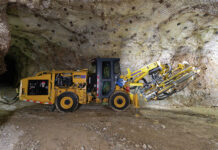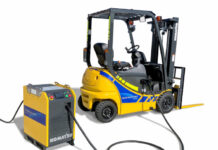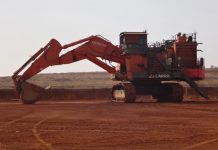John Bashforth, a fourth-generation farmer, quarry and machinery operator in the Byron Bay region of NSW, tends not to turn over his heavy equipment often.
He’s just bought his third Komatsu bulldozer, almost half a century after his father Jack purchased their first. The three machines have seen contiguous service.
The original, a D60A-3 which John believes to be only the second Komatsu bulldozer sold in Australia, saw a relatively brief 18 years’ action on the family’s quarry.
The second, a 155A-1, is the long-service record holder with 31 years’ hard work before it was replaced only recently by a high technology Dash 8 version of the same machine.
John is the CEO of J&M Bashforth & Sons, one of North Coast NSW’s best known and most prolific operators with more than 30 machines and a like number of operators working across three primary sectors – quarry, development and general machinery for local farmers and builders.

The core of the company’s business is its near-to-unique quarry, set just 12 kilometres inland from Australia’s eastern most point, the Byron Bay lighthouse.
John’s dad Jack discovered the quarry in the mid 60’s while clearing for the farmer who owned the property. The quarry mines chert, a hard, fine grained quartz silica which has unique self-compacting properties that make it highly prized for base material in building developments and on-roadwork, and it provides certainty to each of the Bashforth business’ divisions.
Jack supplied the first machinery to start the new Ocean Shores Development, and was awarded a contract to produce roadbase from a quarry onsite for the road infrastructure. It was back in 1970, that 16-year-old John, underaged and unlicensed, operated the first Komatsu D60A-3, to win & load material to, back than, one of the state’s largest residential and lifestyle developments, Ocean Shores.
“Fifty years on, we’re working on what could be the last phase of the Ocean Shores development. The onsite quarry closed years ago, and returned to nature, the roadbase we use today is produced from the Myocum operation and the same equipment, somewhat upgraded,” John said.
The Bashforth company has permission to extract 100,000 tonnes of chert a year from the site and each year they come within 5,000 tonnes of their allowance.
“In fact, for the last two years we’ve been within 1,500 tonnes,” John said.
It’s a fine balance made achievable by a number of operational rules John, and lately his son Luke have put in place.
“We have our machinery serviced on site by its supplier to ensure continuity of mechanical knowledge and as much as possible, we assign one operator exclusively to a machine,” John said.
“The driver on the new Dash 8 was on the Dash 1 before that and he knows how to achieve the best result while treating the machine like he owns it.”
Extracting chert is an exacting process and John says the weight and size of the D155A-8 is well suited to the task.
“There’s no need for a larger machine and the hours we need to fulfill our quota are well within the Dozer’s capability,” John said.
According to John, the two machines returned relatively similar productivity, but the Dash 8 does so with substantial improvements in driver comfort, vision and safety.
“I receive Komatsu’s monthly KOMTRAX report which enables me to understand the operating functions, like idle time, and how much time has been spent ripping and dozing, and how it can improve,” John said.
“The good news is that it’s pretty much in-line with what my operator is doing.”
John grew up with machines – his father Jack, grandfather Edgar, his brother Norm and great grandfather Alfred all operated woodcutting, sawmilling and dairy farming operations in the Brunswick Heads region of northern NSW. I can still recall the old Cletrac 22 tractor that they used to snig the logs to the mill with.
John was driving machinery well under the legal allowable age and can recall as a ten or twelve year old, Saturdays & Sundays on some occasions, Bill Simpson who was a tip truck driver that subcontracted to dad would pick me up at 4.00am in the morning, take me out to a farm pit where I would push material all day, no need to go to a gym them days, stick shift machines and the steering sticks weren’t power assist. Today he still enjoys getting on the equipment when business pressures permit. “I call it mechanical therapy,” he said.

John tried to point Luke in a different direction.
“I gave him a ball point pen and said: ‘That’s worth $1.50 and it will earn you as much as that excavator over there’,” John said.
Luke, with a Bachelor of Civil Engineering, worked in the industry, but after two years with a multi-national, he returned to the family business and enjoys his machine time.
“We’re mirror reverse,” John said. “He’s an engineer who enjoys time operating and I’m an operator performing an engineers’ job.”
![[Video] How a Huge Mining Excavator Can Be Electric](https://www.heavyquipusa.com/wp-content/uploads/2025/02/liebherr-r9400e-fortescue-218x150.jpg)










 Copyright 2020 All rights reserved.
Copyright 2020 All rights reserved.